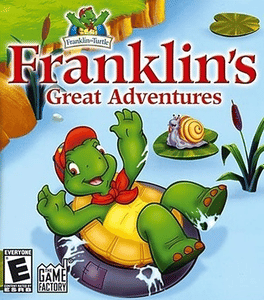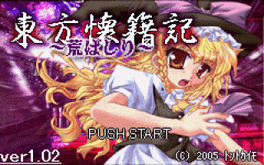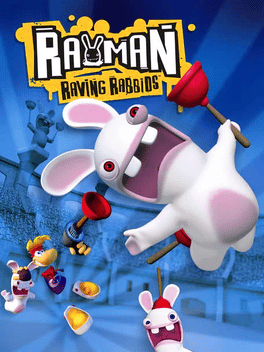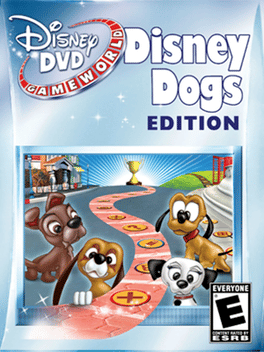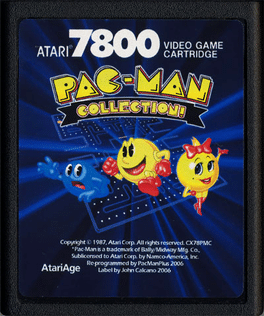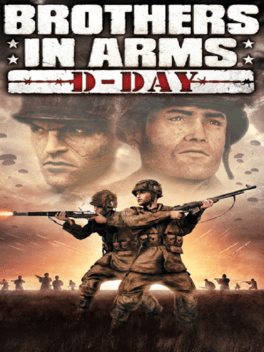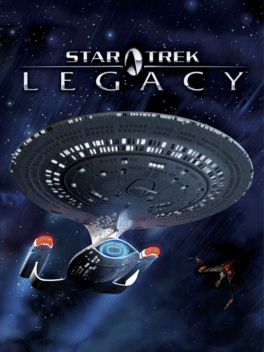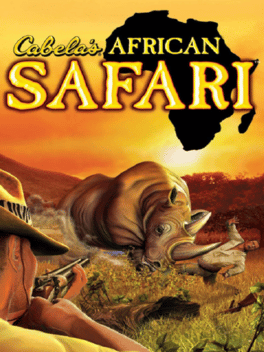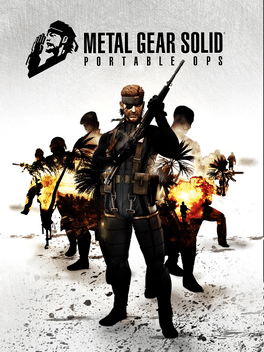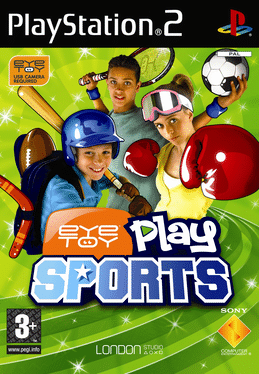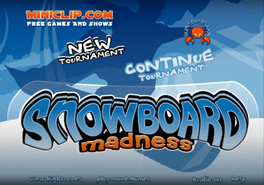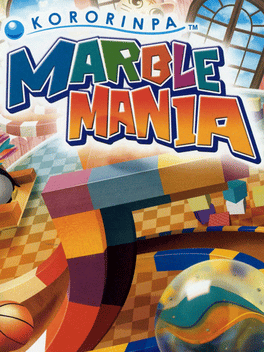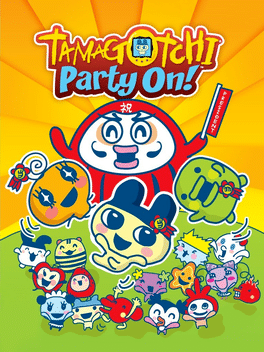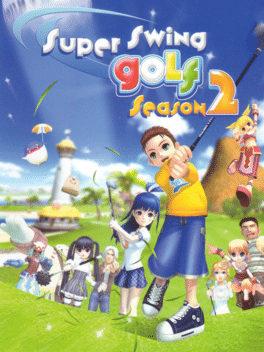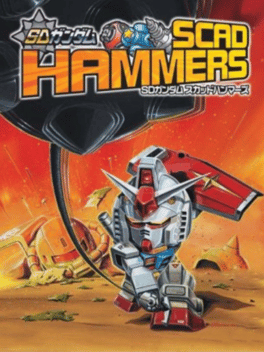New Games - Page 10186
-
Franklin's Great Adventures
2006
Franklin the Turtle is off with his friends in the summer embarking on new adventures and meeting new friends. Franklin's Great Adventures is an adventure game with light puzzles. -
Lionel Trains: On Track
2006
The gameplay of Lionel Trains: On Track is very similar to Sid Meier's Railroad Tycoon series of computer games. In the game, you are the head of an unspecified railroad, and your objective is to connect different cities together through rail, using the funds you start off with, and later earn. There are several separate modes of gameplay, with varying objectives. -
Disney DVD Game World: Disney Dogs Edition
2006
Disney Dogs is a DVD game starring Mickey Mouse, Pluto, and many more Disney characters. -
Captain Scarlet
2006
Captain Scarlet
2006
An Europe-exclusive racing game based on the 1960s marionette-based sci-fi series Captain Scarlet and the Mysterons. Captain Scarlet is a 3D racing/shooter game based on the TV series Captain Scarlet and the Mysterons (1967-1968). The player takes control of Captain Scarlet who has to protect the world from the Mysterons, an alien race wanting revenge for the destruction of their base on Mars by Captain Black. In the game captain scarlet takes on missions to thwart the plans of the Mysterons. These missions include escorting V.I.P.s, rescuing Captain Blue, destroying a bomb truck and delivering supplies in time. While playing, the player will drive two different vehicles that can fire projectiles - the Spectrum patrol car and Spectrum pursuit vehicle. -
Pac-Man Collection
2006
Pac-Man Collection
2006
star 7.8Pac-Man Collection (Atari 7800) is a 2006 homebrew compilation by Bob “PacManPlus” DeCrescenzo, published through AtariAge. It includes multiple Pac-Man and Ms. Pac-Man arcade variants—such as Puck Man, Hangly Man, Ultra Pac-Man, and Random Mazes—each can also be played in Plus mode, with selectable Fast, Slow, or Button-activated speed settings. It includes these games: Pac-Man Puck Man Hangly Man Ultra Pac-Man Random Mazes (Pac-Man style) Ms. Pac-Man Ms. Pac-Attack Ms. Random Mazes -
Brothers in Arms: D-Day
2006
star 7Experience the intensity of WWII through the stories of Sergeants Baker and Hartsock and your squad of paratroopers during the Normandy invasion. Brothers In Arms D-Day brings players the best of the Brothers In Arms franchise in a handheld gaming system. Players experience D-Day as a Screaming Eagle with more tactics and action exclusive to the PSP system. Now players can surprise the enemy for the ultimate advantage in firefights, leading a fire team throughout the entire Normandy campaign. For the first time, players will also be able to lead a bazooka team, order their squad on an MG42, or fire mortar rounds. An enhanced co-op mode (Skirmish) offers players a 12-mission campaign. Co-op multiplayer (Skirmish mode): Play with a friend over ad hoc (wireless) through 12 different Skirmish missions in four different game modes through the co-op campaign. -
Star Trek: Legacy
2006
Star Trek: Legacy
2006
star 5.9This game spans the history of Star Trek, following the challenges facing the Starfleet as an Admiral of a task force of warships. Gameplay campaigns play out in all of the Star Trek eras (from the founding days of Enterprise to the adventures of classic Star Trek to the bold unknown of The Next Generation, as well as the trials and tribulations facing Deep Space Nine and Voyager), as the Federation faces an entirely new enemy that has the power to travel through time. With full multiplayer support, players can choose from small-scale engagements to all-out war involving multiple star systems in addition to tracking stats and player rankings. -
Cabela's African Safari
2006
star 7.5Players discover Africa's untamed wild as they hunt a variety of African big game in pursuit of the ultimate hunting challenge - the feared Big Five - leopards, lions, elephants, rhinos and Cape buffalo. In Cabela's African Safari, players choose from seven, 10 or 14 day safaris including open safari, game tracking, baiting and herd hunting missions. The game features over 30 exotic species of animals including sable, kudu, gemsbok, eland, waterbuck, and impala. -
Metal Gear Solid: Portable Ops
2006
star 7.9MPO is the fourth Metal Gear title made specifically for the PSP and the first one to retain the series' action-based play mechanics. It is the first canonical outing of the Metal Gear Solid series for a portable platform, following the storyline of Metal Gear Solid 3: Snake Eater. Set in Colombia in 1970, six years after the events of Snake Eater, the game follows the exploits of Naked Snake after his former unit, FOX, goes renegade. The game also chronicles the eventual founding of FOXHOUND and The Patriots, as well as the inspiration of the military state Outer Heaven. Metal Gear Solid: Portable Ops has received highly positive critical reception from critics, and is often viewed as one of the best games released for the PSP. It was praised for its visuals, usage of Metal Gear elements and story, while criticism was directed at the game's control scheme. -
EyeToy: Play Sports
2006
EyeToy: Play Sports
2006
2006 is a bumper year for sport, with the World Cup and the Winter Olympics and EyeToy: Play Sports adds a whole lot more sporting fun. With over 101 off-the-wall mini-games to tackle, it's easy to see why this has the potential to inspire a new generation of budding Olympians and World Cup winners. -
Snowboard Madness
2006
-
Kororinpa: Marble Mania
2006
KEEP THE BALL ROLLING! Kororinpa: Marble Mania is a fun and addictive action puzzle game that lets players tilt and rotate the Wii Remote to roll a ball around a maze to get the goal! Using an intuitive control scheme, gamers of all ages and skill levels can pick up a Wii Remote and start playing right away. Collect crystals and unlock special marbles and hidden stages as you make your way through the numerous mazes. Varying themes such as a magical forest and neon soaked cityscapes keep the game fresh and entertaining for the whole family. • Simple and intuitive control system • 20 kinds of marble variations with different control, playability and look and feel • Full 3D control, tip the world on its side, and even upside down • Over 40 diverse stages packed with tricks, traps and secrets • Compete against a friend with a 2-player race mode -
That's So Raven: Psychic on the Scene
2006
That's So Raven: Psychic on the Scene is a point-and-click video game that is based on the TV series That's So Raven. In the video game, Raven has to stop the Thompson theater from closing. Gameplay: The player has to go through many places while collecting items and talking to characters. The only way for the player to get inside certain areas is by making Raven change into a disguise. There is a fashion area of the game where the player can change how Raven looks in a variety of ways. There is a small number of mini-games. Reception: Lucas M. Thomas of IGN said that, "Most games like this deserve ridicule, but that this one doesn't because the fans will like it. "Common Sense Media said that the game is well-designed and that it has high entertainment value, but that the game might be too easy for some kids. Matt Paddock of Game Vortex said that the only flaw is the bad grammar and negative talk. -
Wing Island
2006
Wing Island
2006
star 4.8Take to the skies with Wing Island, the first flight action game for the Wii. As Junior, a wide-eyed teenager with incredible piloting skills, soar around Shell Island taking on jobs to keep your family aviation business running. From dusting crops to more daring missions like aerial fire fighting, players will use the Wii Remote to perform aerial acrobatics and learn to fly in formation, controlling a group of 5 planes at once. -
Tamagotchi: Party On!
2006
star 5.3It is time for a new president of Tamaworld, and the Tamagotchis are setting up an election to see who it will be. The planet is abuzz and some of the characters want to be president. The election managers hold a competition for whoever can do the most good deeds, become the most popular Tamagotchi on the planet and get the most votes. The Tamagotchis set off to become the most popular Tama on the planet and the title of President! -
Super Swing Golf: Season 2
2006
star 8.3Swing into action with your favorite characters Swing into action with your favorite characters as they return to the island to challenge new courses with all new story and tournament modes. New multiplayer modes have been introduced to keep the party going with friends and family. With completely new customizations, costumes, and secrets, Super Swing Golf Season 2 is a true hole-in-one! Party Mode - Play new party games - "Darts" and "Driving Contest"! New Tour Mode - Compete with rivals and progress through the game as you conquer all the island of Pangya! Fun Courses - Choose from newly added courses to keep your golf experience fresh and exciting! Colorful Costumes - Unlock new costumes and some classic Tecmo character costumes! -
Super Swing Golf
2006
Super Swing Golf
2006
star 7The first Super Swing Game (or better known as Pangya in Japan and Korea) and has a feel of Hot Shots Golf. While based off the Pangya series from Japan, this version's system has been totally revamped for the Wii's control scheme, utilizing the Wii Remote for swinging and putting. The player has ten different courses to play on, ranging from simple lush and green tees to a wind tunnel no less and can choose from eight different characters, each with their own story-line if the player chooses the Story Mode. There is also multiplayer modes, that can support up to four different players, to choose from: Stroke Play, Match Play and Balloon Pop, where the objective is to hit the ball accurately enough to hit a floating balloon on the course. -
SD Gundam: Scad Hammers
2006
star 7This Gundam title was one of over 20 titles to debut alongside the Wii at E3 2006, but was only ever released in Japan.

